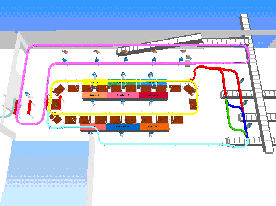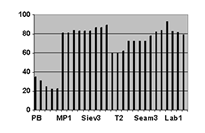Three dimensional Modelling of Customer Satisfaction, Retention and Loyalty for Measuring Service Performance
The aim of this thesis is to propose a model that explains the relationship between customer satisfaction, retention and loyalty based on service quality attributes. The three elements of satisfaction, retention and loyalty towards products represent ongoing challenges for the corporate financial performance. Customer behaviour analysis (known as business intelligence or customer relationship management) has become a major factor in the corporate decision making and strategic planning processes. Prevailing logic dictates that by improving service attributes one should expect better customer satisfaction levels. Consequently, improved satisfaction levels should increase the probability of customer retention and degree of loyalty. Substantial research work has been dedicated to explain the importance of customer behaviour measurement for industry. However, there is little evidence that there has been an overall integrating empirical research that relates the three elements of satisfaction, retention and loyalty with respect to service quality attributes. Empirical data collected from the UK mobile telecommunication for this research shows that such an objective model that is capable of capturing this three dimensional relationship will contribute towards more robust decision making and better strategic planning. The proposed thesis extracts the data about key service attributes from a combination of literature review, surveys, and interviews from the UK mobile telecommunication industry. Responses were analysed using multiple regression, regression analysis with dummy variables, logistic regression, logistic regression with dummy variables and structural equation modelling ( SEM) to test variables and their interrelationships. This study makes a step forward and contributes to the body of knowledge as it: (a) highlights the role of service attribute performance towards customer satisfaction, consequently identifies attributes that affect satisfaction and dissatisfaction of customers, (b) maps the relationship between attribute importance and attribute performance, (c) classifies customers with respect to the role and length of relationship they have with the company (switching probability), and (d) describes the interrelationship between customer satisfaction, retention and loyalty. The novelty of the research lies in : (a) establishment of a framework that links service attribute performance to customer satisfaction and then to customer future intentions (customer retention and customer loyalty), and (b) provision of a model that could assists key decision makers in prudent usage of resources for maximum profitability . This dissertation presents a novel approach methodology and modelling construct for customer behaviour analysis. For proof of concept it presents a case study in the mobile telecommunication industry. It is worth noting that in this research work Customer Retention is interpreted as probability of switching between service providers. Customer Loyalty is interpreted as referral (word-of-mouth) activity by existing customers.Customer Optimisation Route and Evaluation (CORE) - Funded by School of Engineering & Design Brunel University

MEATRAC - Automated Tracking and Handling of meat cuts (AFM 110) DEFRA project no. CSA 5261
This project was sponsored and funded by Department of Environment, Farming, and Rural Affairs (DEFRA) Advanced and Hygienic Food Manufacturing LINK programme. The consortium of partners that delivered the project comprised of, Brunel University, Pera, Dawn Meats, Safeway Stores, Scootabout International, Rockwell Automation, Codeway, Arca Systems, Street CraneXpress, Rehau, and Avery Dennisson.
The main challenges tackled in this project were:
1. Design of an intelligent material-handling system (bead-driven conveyor system) that stores and transfers the information of a given piece of meat along its path. This overhead conveyor is capable of diverting the pieces of meat from one path to another with minimal effort. It is designed to ensure optimal ergonomics.
2. Standardisation and automation of production process, enhanced tracking and labeling techniques, and compatible control systems are the main elements that assisted the system designer in solving complexities of carcass disassembly.
3. Non-invasive sate-of-the-art Radio Frequency Identification of products within the shopfloor to ensure 100% traceability.
4. Design and development of a control system capable of retrieving, storing and transferring information along the route in a local area network. And also complex routing of material along the plant.
5. Development of a standardised database system to store and disseminate information. Also included is a user-friendly software interface for information retrieval and reporting.
This system is currently being developed for commercial plants.

2000
Finalised
Discrete Event Simulation for one of Europe's largest Pet Food Manufacturers - Nestle' Friskies
A full system simulation and data analysis and report on the findings. The objectives of the project were:
- Data collection and analysis.
- Model development based on information collected and simulation objectives.
- Analysis of results consisting of resource utilisation, average throughput time, and system output. Highlighting anomalies and bottlenecks in the system.
- Proposals for system improvement and investment strategy

 resource utilisation
resource utilisation